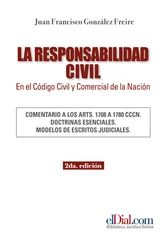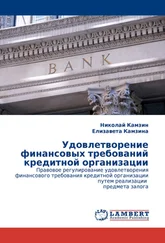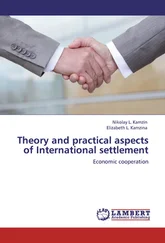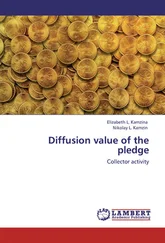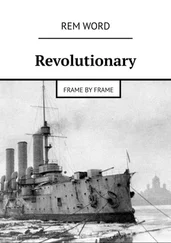History of development of analogues of writ of production in Russia dates back to the adoption in 1864 of the Charter of Civil Procedure. But when it comes to simplifying the process of Russian civil law in a broader sense, we should mention the earlier period – 14th and 15th century, when the desire for opportunities to simplify the process led to the emergence of so-called extrajudicial Institute of ratification. Simplification was that in the adversarial process that begins on the complaint of the plaintiff (the petition), in certain situations, the case could be resolved on the merits without a special act of the judicial process, evidence and trial. The function of such an act performed without trial diploma. Information about it is found in Pskov and Novgorod Judgment charters in 1497 and Court book 1550 and other acts of the era.
In the literature, acknowledged that extrajudicial charter was a court decision handed down without trial on the defendant's failure to appear at the hearing and stated the loss of the case by the defendant. The plaintiff claimed the right as if the court had taken place.
В.Н. Татищев comment Text Court book 1550, noted that the issue of extrajudicial consequences of ratification was that the plaintiff received a letter the defendant had «the power thereof, everywhere catch before the court and submit to «правежа» and punishment» and «beat him at ease and rob, kill not only the house and not destroy». The last statement is, in fact, expressed in an archaic form of the right to enforce the debtor, the state provides to the creditor at last granted extrajudicial literacy.
The so-called «extrajudicial accusation» and called for the Cathedral Code of 1649, the rules which determine in more detail the conditions under which could be issued without trial and indicate that the extrajudicial could be issued and the defendant fails to appear at a hearing of the plaintiff.
Condemnation without trial, executed without trial in the charters, is the first step of the Russian legislator towards the creation of special rules of procedure – and reduced cost compared with the general rules. The next step was taken in the second half of the 19th century.
The Charter of Civil Procedure (GHS) in 1864 included reduced production of indisputable rules of affairs in the manner which necessarily dealt with the matter:
– on claims made on credit products and supplies, hiring of houses, apartments and all kinds of facilities, hiring servants at all production work artisans, craftsmen, day laborers and the like;
– at the request of the performance of contracts and obligations;
– claims about giving and receiving to save money and other property;
– claims for compensation for damages, losses and «самоуправное» occupation, when they do not involve disputes over the ownership of real property;
– disputes and requests that arise during the implementation of decisions;
– disputes about the privileges;
– in actions for compensation of victims of accidents and office workers in the factories and their families;
– disputes and complaints for enforcement.
In order to be considered in short all things at all, if it is agreed by the court and have not seen this particular obstacle. By order of the rules of the reduced characteristic in common, but with few exceptions, which were limited primarily to shorten the proceedings and the obligations of the parties to immediately submit the documents on which they base their rights: the plaintiff – if the lawsuit petition, the defendant – not later than the first meeting in the case.
Reduced production order has been unsatisfactory and too difficult in practice to speed up the proceedings on the undisputed liens. Measures were taken to remedy the situation. December 29, 1889 has been published rules for the production of rural chiefs and municipal judges. Earthen chiefs and municipal judges granted the right to manufacture their powers, to pay to perform acts without judicial review.
Causative execution subject to:
– acts of the serfs and notary, the acts of the payment of money or the return of things and other movable property;
– the employment contracts of real estate, certified or committed by the same procedure.
Recovery of the causative procedures on these matters was allowed only in cases where:
– acts on which it is based, committed or witnessed by the established order;
– the performance on them was not delivered in the very act in reliance on such conditions, the occurrence of which must be proved previously by the applicant, that is, if an act is beyond question.
In 1912, the rules of the causative version were introduced in the GHS. Chapter 15 GHS «On the performance of the causative acts» was developed based on standards set forth in the Rules for the production of rural chiefs and municipal judges. Commenting on the GHS, К.П. Змирлов noted on the causative form of enforcement of acts: «A distinguishing feature of the cases, so-called undisputed penalties is that the production of them between the parties as there was no dispute, and they are conducted solely for the receipt of the order of the causative performance of an obligation by the defendant. Under such conditions, in view of simplicity and clarity of the legal relationship of the parties, subject to strict procedural forms established in order to protect the interests of the plaintiff and defendant, it is unnecessary and not only needlessly alienates period of performance, but in vain, and both the claimant's burden, as well, and bona fide defendant. From this point of view of the above categories exclude cases from the trial, with the replacement of the last direct appeal expired liabilities to the causative enforceable in all respects to be preferred. In the same example and persuade Western Europe, where it started successfully applied almost everywhere, as well as some experience and national legislation, since the implementation of the causative execution of acts of «земскими» precinct chiefs and city judges does not cause any complaints by whom» [10] Черемин М.А. Приказное производство в российском гражданском процессе. – М.: ООО «Городец-издат». 2001. С. 29.
.
By execution of CSA causative acts was «the judge's ruling, without calling and listening to explanations of the defendant, the immediate execution of taken over the defendant in the act of commitment, time of execution of to whom has come» and subject to the execution of the CSA:
– serfs, notary and certified by the rules of a notary of the acts of the payment of money or the return of things, or other movable property, if the execution of the aforesaid obligations in these acts were not made subject to such conditions, the occurrence of which was to be pre-proved by the plaintiff;
– committed or witnessed in the same order of real estate employment contracts in relation to the obligation to clear the employer or rent property consisting of hiring due to the expiration of employment and the obligation of payment of wage money;
– protested bills;
– Acts of agreements certified under the special rules on compensation of victims of accidents due to the workers and employees, as well as their families.
The desire for simplification of the civil procedural form was characteristic of the Russian civil process after 1864 and led to the beginning of the 20th century to the emergence of legislation governing the protection of the rights detailed in a simplified form.
High level of development of the theory simplify the civil procedural form was in the works of pre-revolutionary scientists-procedure causative and effective execution of acts determined the binding of a similar institution in the first Soviet of the RSFSR Code of Civil Procedure 1923. It was first introduced the term «court order». In the explanatory memorandum to the draft Code stated: «Art. 210 of the Draft Code of Civil Procedure allow a special procedure for consideration in the form of so-called issue of writs for the simplest cases, based on fixed and not subject to appeal documents. Issuance of orders made without summoning the parties and without a public affairs individually parse the people's judge, which is sufficient to produce an authentic document». According to Art. 210 orders were used to collect the money or the requirements for the return or transfer of property-based:
Читать дальше



